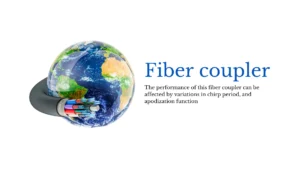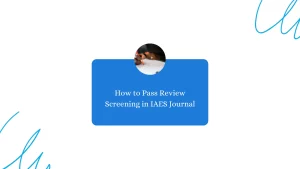Greetings, fellow Nawala! May you always be in good health.
This is the IAES Nawala from the Institute of Advanced Engineering and Science. Today we will share some news about deepfakes. Deepfakes are media, in the form of images or videos, created by machine learning. The media looks real by training it with image and video data. Deepfakes can manipulate faces in videos so that the output can be misused. Therefore, it is important to criticize the authenticity of the content of digital media. Sohan et al. (2023) conducted a survey on detecting deepfakes in videos. The survey covered deepfake video datasets that are difficult to detect by AI while introducing all publicly available datasets. The goal of their research is to speed up deepfake video detection with larger and more challenging datasets.
Deepfake video has usefulness in entertainment and multimedia technology, however, the danger of deepfake is significant to the social, economical, and political sectors so far. Specifically, to diverge any public opinion by generating fake news and spreading misleading information, national security may be under risk due to misrepresenting statements given by political leaders. The creation of such manipulated videos are getting easier day by day and at the same time it is necessary to detect and prevent them. In order to do that, researchers are creating challenging fake video databases for artificial intelligence (AI) based detection models to contribute to the research. This paper reviewed the existing deepfake video detection datasets available online and used in the previous research articles. We analyzed the literature from two different perspectives, datasets and detection models. The goal of this study is to introduce all publicly available datasets in this field including the discussion of techniques used to generate the data. In addition to our contribution, we showed a result comparison among different deepfake datasets and discussed the findings.
A survey on deepfake video detection datasets
Md Fahimuzzman Sohan, Md Solaiman, Md Aumit Hasan
Deepfake techniques are a rapidly growing field. Deepfake algorithms use deep learning to manipulate images and videos that are difficult to distinguish from the original. Therefore, there is a need to develop tools to automatically detect the authenticity of digital media. Abu-Ein et al. (2022) analyzed the algorithms and data used to create deepfakes, as well as several other approaches to detect them. The goal of their research was to develop new, more robust strategies for dealing with increasingly complex deepfakes. The use of deep learning in creating deepfakes poses challenges that require innovation in detection to protect privacy, democracy, and national security.
Deep learning has effectively solved complicated challenges ranging from large data analytics to human level control and computer vision. However, deep learning has been used to produce software that threatens privacy, democracy, and national security. Deepfake is one of these new applications backed by deep learning. Fake images and movies created by Deepfake algorithms might be difficult for people to tell apart from real ones. This necessitates the development of tools that can automatically detect and evaluate the quality of digital visual media. This paper provides an overview of the algorithms and datasets used to build deepfakes, as well as the approaches presented to detect deepfakes to date. By reviewing the background of deepfakes methods, this paper provides a complete overview of deepfake approaches and promotes the creation of new and more robust strategies to deal with the increasingly complex deepfakes.
Analysis of the current state of deepfake techniques-creation and detection methods
Ashraf A. Abu-Ein, Obaida M. Al-Hazaimeh, Alaa M. Dawood, Andraws I. Swidan
Hadi et al. (2022) surveyed deepfakes in terms of deep learning and multimedia forensics. The survey covers various deep learning models and algorithms used in generating artificial media, as well as cutting-edge methods used in multimedia forensics to identify digital content. It also discusses the challenges and future directions in this rapidly evolving field, emphasizing the need for robust and reliable detection mechanisms to combat the proliferation of deepfakes. The survey aims to contribute to the advancement of multimedia forensics and the development of effective countermeasures against the potential misuse of deepfake technology.
Artificial intelligence techniques are reaching us in several forms, some of which are useful but can be exploited in a way that harms us. One of these forms is called deepfakes. Deepfakes is used to completely modify video (or image) content to display something that was not in it originally. The danger of deepfake technology impact on society through the loss of confidence in everything is published. Therefore, in this paper, we focus on deepfake detection technology from the view of two concepts which are deep learning and forensic tools. The purpose of this survey is to give the reader a deeper overview of i) the environment of deepfake creation and detection, ii) how deep learning and forensic tools contributed to the detection of deepfakes, and iii) finally how in the future incorporating both deep learning technology and tools for forensics can increase the efficiency of deepfakes detection.
A survey of deepfakes in terms of deep learning and multimedia forensics
Wildan Jameel Hadi, Suhad Malallah Kadhem, Ayad Rodhan Abbas
The above articles are a small part of the research on deepfakes. To get more information, readers can visit the page and read the articles for FREE through the following links: https://ijece.iaescore.com/ and https://ijeecs.iaescore.com/.
By: I. Busthomi




